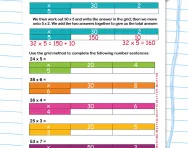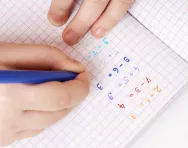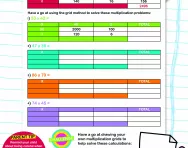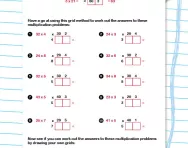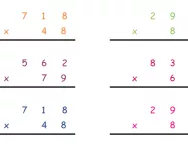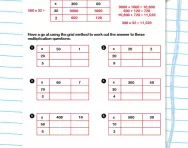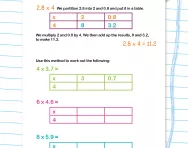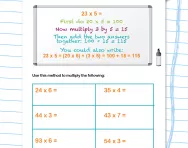Important update from TheSchoolRun
For the past 13 years, TheSchoolRun has been run by a small team of mums working from home, dedicated to providing quality educational resources to primary school parents. Unfortunately, rising supplier costs and falling revenue have made it impossible for us to continue operating, and we’ve had to make the difficult decision to close. The good news: We’ve arranged for another educational provider to take over many of our resources. These will be hosted on a new portal, where the content will be updated and expanded to support your child’s learning.
What this means for subscribers:
- Your subscription is still active, and for now, you can keep using the website as normal — just log in with your usual details to access all our articles and resources*.
- In a few months, all resources will move to the new portal. You’ll continue to have access there until your subscription ends. We’ll send you full details nearer the time.
- As a thank you for your support, we’ll also be sending you 16 primary school eBooks (worth £108.84) to download and keep.
A few changes to be aware of:
- The Learning Journey weekly email has ended, but your child’s plan will still be updated on your dashboard each Monday. Just log in to see the recommended worksheets.
- The 11+ weekly emails have now ended. We sent you all the remaining emails in the series at the end of March — please check your inbox (and spam folder) if you haven’t seen them. You can also follow the full programme here: 11+ Learning Journey.
If you have any questions, please contact us at [email protected]. Thank you for being part of our journey it’s been a privilege to support your family’s learning.
*If you need to reset your password, it will still work as usual. Please check your spam folder if the reset email doesn’t appear in your inbox.
What is the grid method?
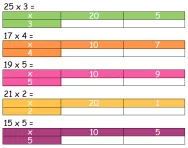
What is the grid method (or box method of multiplication)?
The grid method is a written method used to teach children multiplication. It involves partitioning numbers into tens and units before they are multiplied.
In some schools the grid method is referred to as the box method of multiplication because children learn to partition numbers into a grid of boxes.

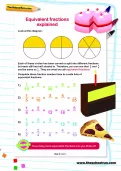
Boost Your Child's Maths & English Skills!
- Start your child on a tailored learning programme
- Weekly resources delivered to your dashboard
- Keep your child's learning on track
Multiplying a one-digit number by a two-digit number with the grid method
Teachers often start teaching the grid method in Year 3 when showing children how to multiply a two-digit number by a one-digit number. For example: they would demonstrate how to work out 37 x 5 by partitioning the numbers and putting them in a grid, then multiplying each one in turn:
The answers of each multiplication calculation (150 and 35) then need to be added, to find the answer, which is 185.
Multiplying a two-digit number by a two-digit number with the grid method
Children need to have the following skills before moving onto this next stage of the grid method:
- Good knowledge of times tables
- Able to multiply any number by 10
- Able to multiply a one-digit number by a multiple of ten (for example: 5 x 70, 2 x 30, 4 x 80 etc.)
- Able to multiply two multiples of ten (for example: 50 x 20, 80 x 30, 60 x 40 etc.)
- A reliable written method for adding four numbers (some three-digit)
In Years 4 and 5 children move onto multiplying a two-digit number by another two-digit number.
Look at the following number sentence: 38 x 62 =
Each number would be partitioned into tens and units and placed in the grid. The numbers in the left-hand column would then be multiplied by each of the numbers in the top row and the answers written in the blank squares as follows:
The four numbers would then be added, using whichever method the child is familiar with.
Multiplying a three-digit number by a one-digit number with the grid method
In Years 4 and 5, children are expected to be able to multiply a three-digit number by a one-digit number. This can also be done using the grid method:
482 x 6 =
Again, the numbers need to be partitioned up and put in a grid. Then the 6 is multiplied by each of the three numbers to make the answers. The numbers then need to be added to produce the answer.
Multiplying amounts of money with the grid method
This method can be useful to children in Year 3 and 4 who are having to work out, for example, the cost of 3 books, each costing £2.63:
It is very important when using the grid method to multiply amounts of money that children remember to keep writing £ or p next to the numbers so that they do not get confused about which unit of money they are dealing with.
Multiplying a decimal by a one-digit number with the grid method
Children in Year 6 are also expected to multiply decimals by one-digit numbers. Before moving onto this, children should be able to multiply decimals such as 0.5, 0.3, 0.8 etc. by a single-digit number mentally. This is a good way to teach this:
0.4 x 7 =
- First work out 4 x 7 = 28
- Then, because the 4 was actually 0.4, the answer needs to be divided by ten, so the answer is 2.8.
If a child was asked to multiply 5.9 x 3, they could do this using the grid method in the following way:
Multiplying a three- or four-digit number by a two-digit number with the grid method
In Year 6, children are expected to multiply numbers of up to four digits by two-digit numbers. If they used the grid method to do this, they would do it as follows:
However usually, at this stage, a child would use long multiplication (also called column multiplication) as a quicker method for these larger numbers.

